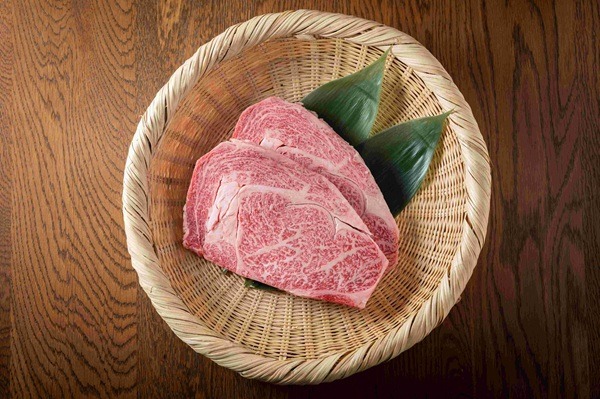Wagyu beef has a reputation for tenderness, flavor, and a melt-in-your-mouth texture that’s hard to beat. But the quality can vary. Some cuts don’t live up to the hype or the price tag. If you’re spending top dollar, you want to make sure you’re getting what you paid for.
Here’s how you can spot high-quality Wagyu beef cuts without relying on luck or flashy labels.
Understand What Sets Wagyu Apart
Wagyu stands out because of its marbling. These are the thin, white streaks of fat that run through the meat. But it’s not just about fat. It’s the way that fat is distributed. The best Wagyu has fine, even marbling that breaks down quickly when cooked, giving it that signature buttery texture.
You’ll also notice the meat feels softer to the touch than typical beef. That’s thanks to a higher ratio of unsaturated fats, which melt at lower temperatures. This results in a richer flavor and smoother bite.
There are different types of Wagyu. Fullblood Wagyu, which is 100% purebred, offers the most intense marbling and flavor. Certified Akaushi Beef, another high-quality variety, is known for its pure genetics and a balanced mix of tenderness and bold flavor.
Check the Marbling Grade
When shopping for Wagyu, marbling is the first thing to look for. In Japan, beef is graded using the Beef Marbling Standard, a scale developed by the Japanese Meat Grading Association that runs from 1 to 12. The higher the number, the more marbling the beef contains. The highest quality grade is A5 Wagyu, which typically scores between 8 and 12 on this scale, showing fine, consistent marbling throughout.
But you don’t need a scoring chart in hand. Look for thin, spiderweb-like streaks of fat evenly spread across the meat. Avoid cuts where the fat clumps in large patches or sits mostly along the edges. That’s not true marbling and it won’t deliver the same flavor.
Wagyu produced outside Japan, like Australian Wagyu, often uses its own grading system, but top producers still follow strict standards to maintain quality and consistency. These cuts can offer excellent marbling and flavor, especially when sourced from trusted breeders.
If you’re unsure how to assess marbling just by looking, buying from premier meat suppliers like Lux Wagyu House takes out the guesswork. They offer cuts that meet strict grading standards, so you’re not left second-guessing quality.
Pay Attention to Color and Appearance
Color says a lot. High-quality Wagyu usually has a bright, cherry-red tone. The fat should look pearly white or slightly cream-colored. If the meat appears dull or the fat looks yellowish, that’s a red flag. It could mean the beef isn’t fresh or hasn’t been stored properly.
Next, check for uniformity. The grain should be fine and tight, not coarse or stringy. Steer clear of cuts with dry patches, dark spots, or visible freezer burn. That’s not just about looks. It affects taste and texture, too.
Learn the Best Cuts for Flavor and Texture
Some cuts showcase Wagyu’s qualities better than others. Here are a few to look out for:
- Wagyu ribeye steak: Packed with marbling and flavor. Great for searing or grilling.
- New York strips: A popular option that’s flavorful yet a bit firmer than ribeye.
- Filet mignon: Extremely soft, less marbled. Best for those who want a milder taste.
- Skirt steaks: Thin, deeply flavored, and perfect for quick, high-heat cooking.
- Bone-in ribeye: Delivers extra beefy flavor thanks to the bone and fat cap.
- Short rib: Excellent for slow cooking and incredibly tender when done right.
- Top sirloin: Leaner and more budget-friendly, but still tender and satisfying.
- Strip steak: A classic that balances tenderness and richness.
If you’re adventurous, you might explore specialty cuts like zabuton or Denver steak, which offer rich flavor and interesting textures. These often contain connective tissue that breaks down during cooking, making them ideal for braises or hot pots.
Check the Packaging and Labeling
Labels can help, but only if you know what to look for. True Japanese Wagyu should list the grade (like A5), the breed (like Kuroge Washu), and often a traceability number. That number lets you track the beef back to the farm.
Be wary of vague terms like “Wagyu-style” or “Kobe-style.” Those don’t guarantee anything. Also, check the country of origin. “Wagyu” isn’t a protected term in every country, so it might be used loosely.
Quality suppliers will make this info easy to find. If it’s not clearly labeled, that’s a warning sign.
Know Where to Buy and Who to Trust
Finding quality Wagyu doesn’t have to be complicated, but it helps to know what questions to ask. Before you buy, check how the meat is graded, where it’s sourced, and whether it’s sold fresh or frozen. Reliable sellers will be upfront with this information.
Watch out for steep discounts, especially from unfamiliar online stores. If the price seems too good to be true, it probably is. Premium cuts of Wagyu beef come at a high price, but the rich flavor and tenderness make them worth it when you take that first bite.
The Final Cut
You don’t need special tools or deep knowledge to spot a great Wagyu cut. Just focus on marbling, color, and clear labeling. Pick cuts that suit your cooking style, and trust what you see and taste over flashy descriptions.
Start small if you’re new to Wagyu. Try a ribeye or striploin and notice the difference. Once you’ve had a good one, you’ll know what to look for next time.


